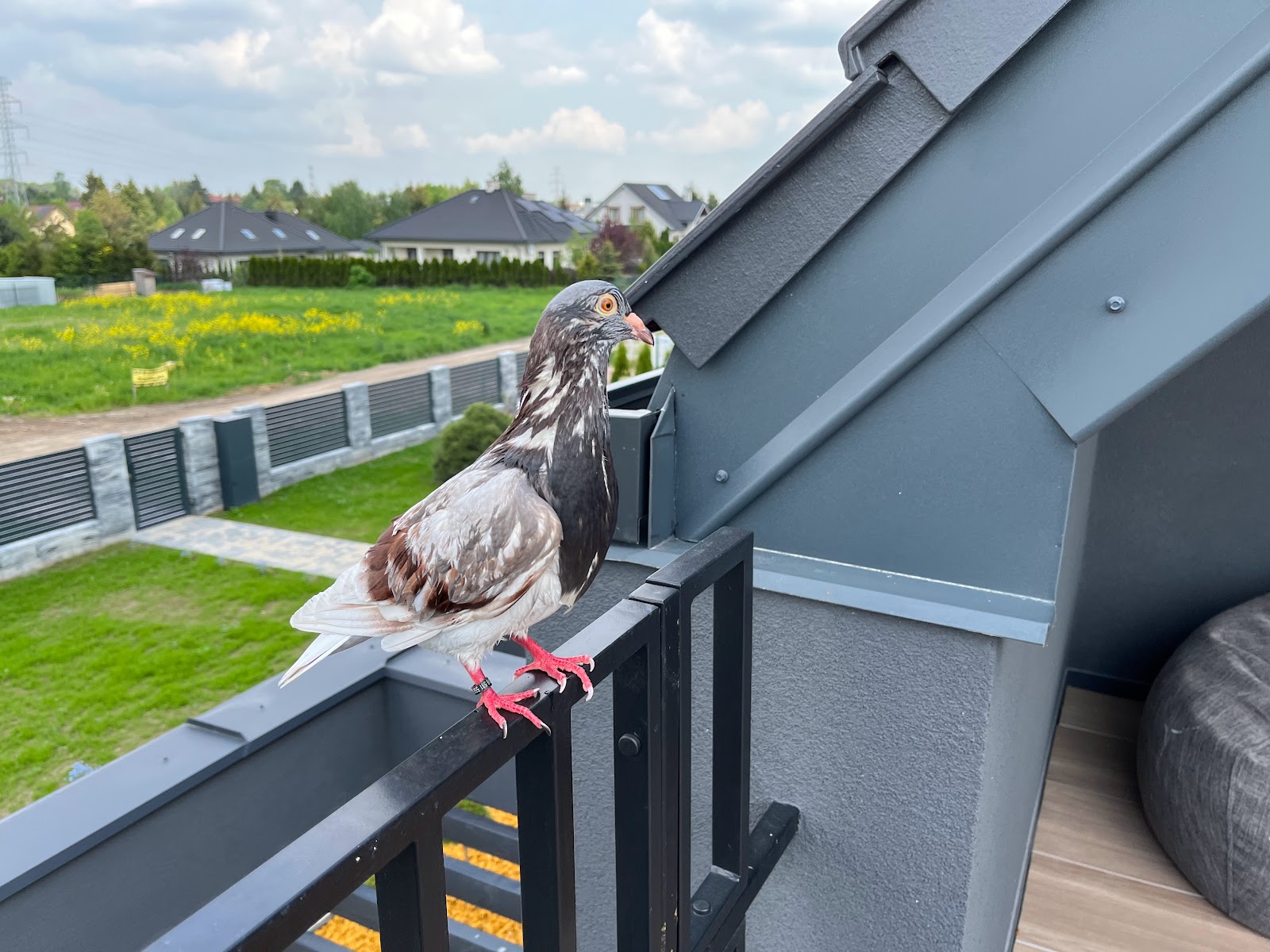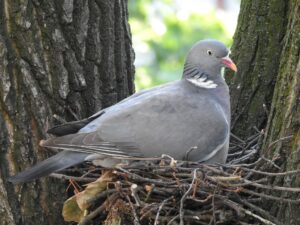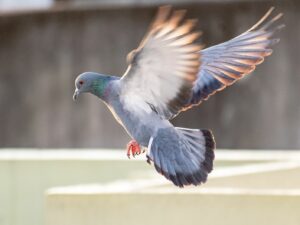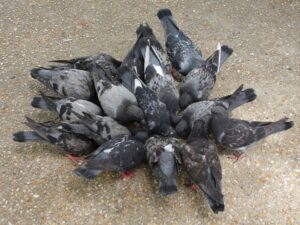As an avid pigeon enthusiast and a proud owner of a rescued pigeon named Gerard, I’ve spent countless hours learning about these fascinating birds.
Today, I’d like to address a question that often pops up among bird enthusiasts and curious minds alike: Do pigeons migrate? It’s an intriguing topic and one that sheds light on the complex behaviors of these common yet often misunderstood creatures.
So, why is it important to know whether pigeons migrate or not?
Well, understanding their behaviors helps us comprehend their needs, whether we’re caring for them as pets, appreciating them in our cities, or trying to coexist with them in our shared spaces.
It enables us to gain a fuller picture of their lives and adapt our interactions to suit their natural instincts.
And besides, if you’ve ever spent time observing pigeons, like I have with my dear Gerard, you’d agree they are fascinating creatures and there’s always something new to learn about them! Let’s dive into this journey of exploration together.
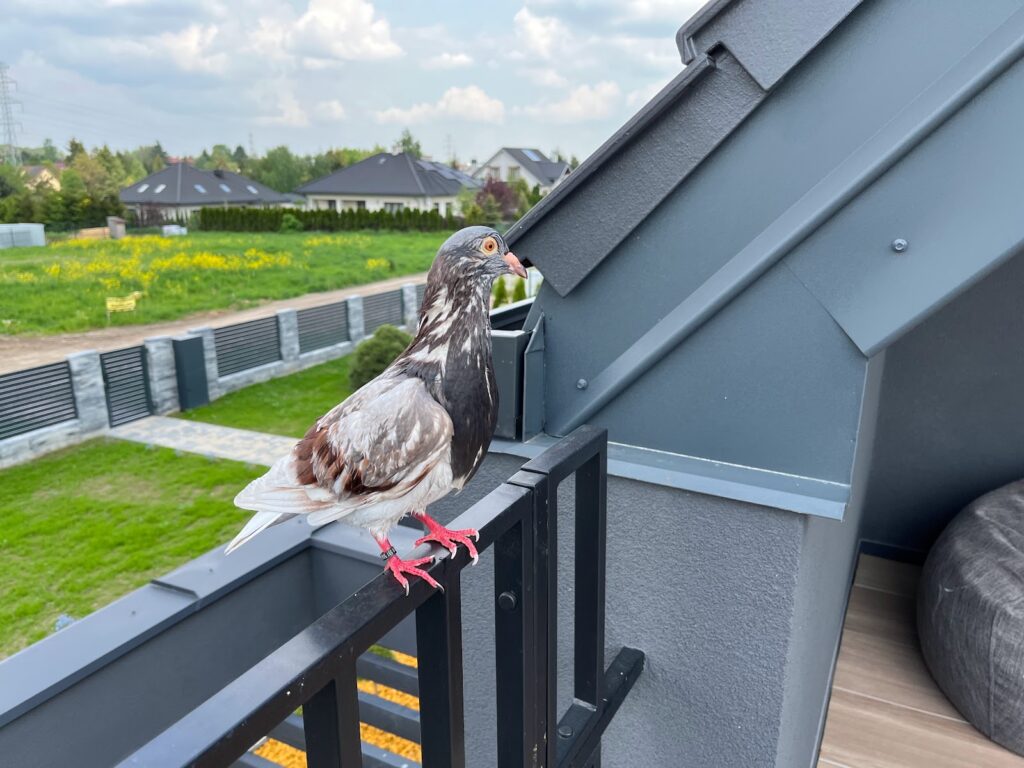
Do Pigeons Migrate? Table of Contents
Do Pigeons Migrate? TL;DR
No, pigeons typically do not migrate. They are known to be sedentary birds, meaning they tend to stay in one place throughout the year. While they can and do travel in search of food or suitable nesting sites, these movements are not considered migration because they are not seasonal and do not involve long distances. This behavior applies to both wild pigeons and urban-dwelling pigeons.
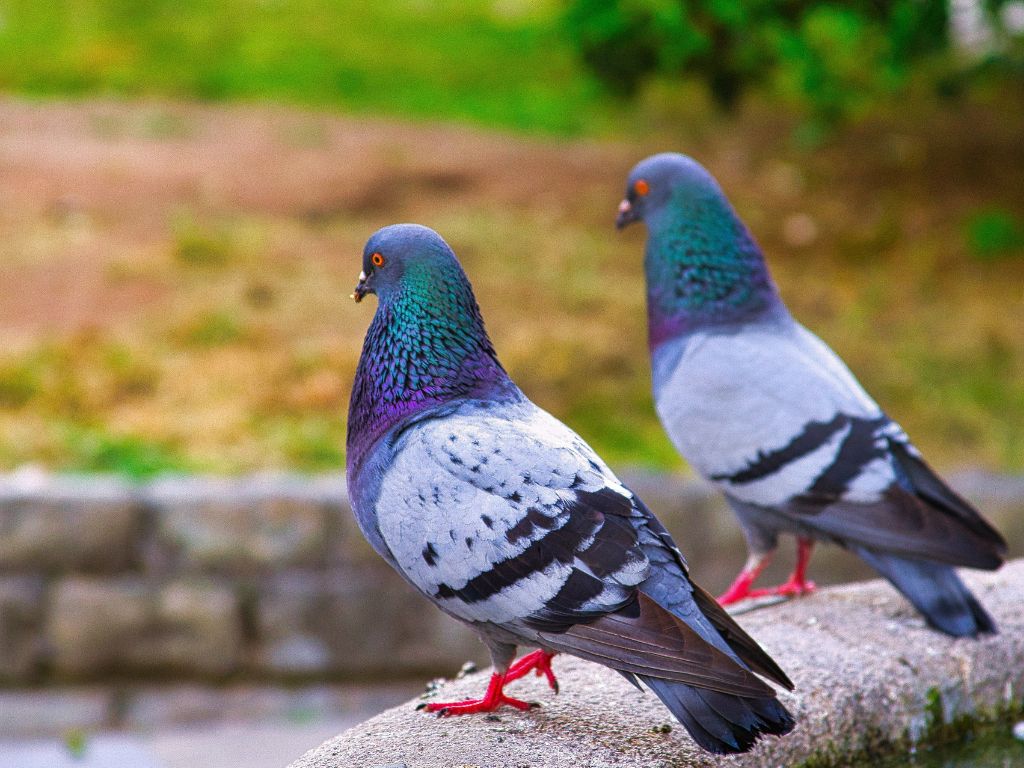
Pigeon Behavior and Lifestyle Overview
Before we dive into whether pigeons migrate, let’s take a closer look at their behavior and lifestyle.
Natural Habits of Pigeons
Pigeons, also known as rock doves, are incredibly adaptable birds. Their natural habitats are cliff sides, which is why they are so comfortable living on the ledges of city buildings – they’re the urban equivalent of cliffs. But don’t let their ubiquity fool you into thinking they are mundane or boring – far from it! Their social nature and knack for survival in various environments are a testament to their ingenuity.
In their daily lives, pigeons are known to forage for food, mostly seeds and grains, but they’re not above indulging in the occasional treat if they find crumbs or other edibles in urban settings. They have a complex social structure and communicate with each other through various coos and displays. And yes, just like Gerard, they can form strong bonds with their human caregivers, too.
General Behavior and Characteristics
Physically, pigeons are well-equipped for their lifestyle. Their strong, swift wings allow them to fly at high speeds, and their homing instinct is renowned – this is why they’ve been used as messenger birds throughout history. As anyone who has observed a flock of pigeons can attest, they are gregarious birds that thrive in company. In fact, a lone pigeon is a rare sight, as they prefer to stick together, whether it’s foraging, bathing, or just hanging out on city statues.
Pigeon Migration: Facts and Myths
There are a lot of both facts and myths regarding pigeon migration. Let’s look at them.
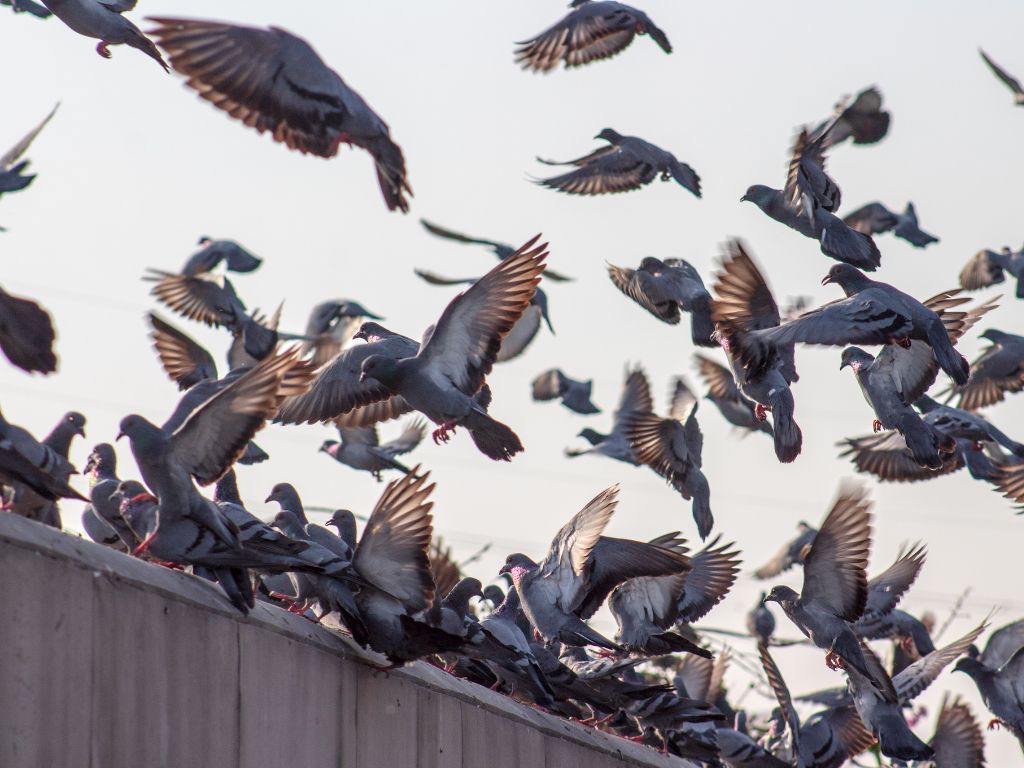
Defining Migration
When we talk about migration in birds, we’re referring to the regular, often seasonal, movement from one region to another. These movements are usually driven by changes in food availability, habitat, or weather. Some birds, like certain species of swallows and storks, are known for their long and complex migratory journeys.
Do Pigeons Migrate?
So, do our friends the pigeons take part in this grand spectacle of nature? The answer is: not really. Pigeons, unlike many other bird species, do not undertake long-distance migrations. Their movements are more localized and depend largely on the availability of food and safe nesting sites.
Instead of migrating, pigeons tend to stay in the same area all year round – a trait called “philopatry”. This is why you’ll often see the same group of pigeons in your local park or city square throughout the seasons. The homing instinct in pigeons is strong – they have a natural desire to return to their home base, which explains their effectiveness as messenger birds in the past, and why my Gerard always finds his way back to me, even after a hearty flight around our neighborhood.
So, while pigeons might not join the ranks of long-distance migratory birds, their habits and lifestyle are no less fascinating, and their adaptation to urban environments is nothing short of impressive.
Check these articles:
Comparison with Other Birds
Let’s now compare pigeon migration with other birds.
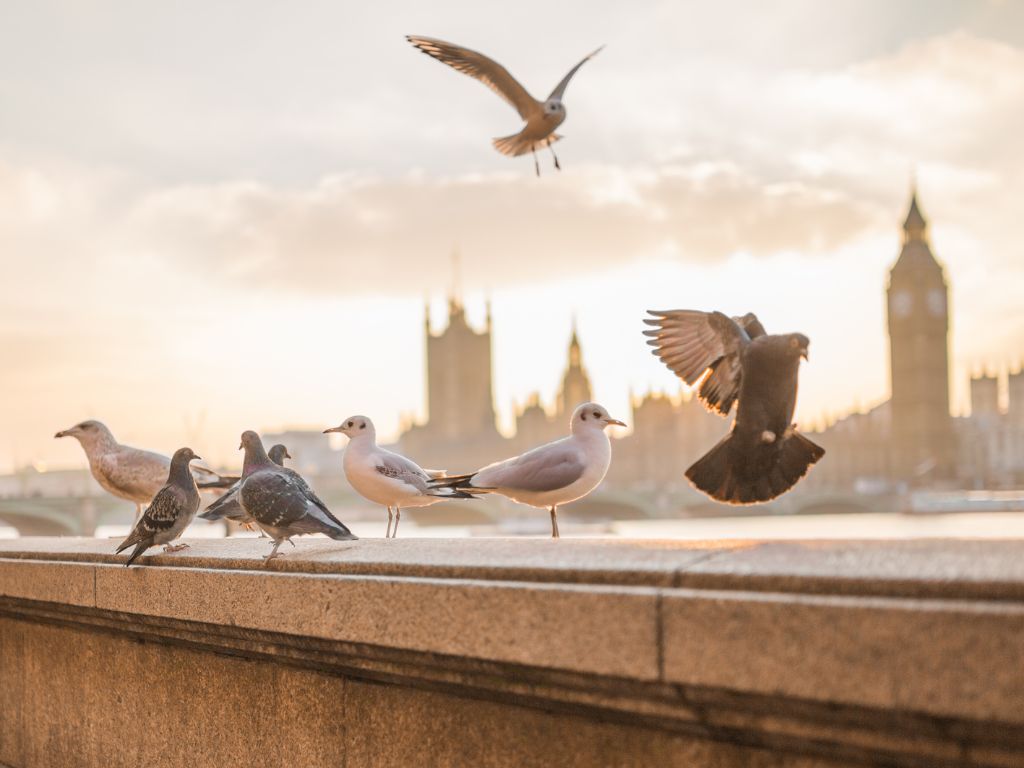
Migration Patterns in Other Birds
Many bird species have very defined and consistent migration patterns. These patterns, which may cover thousands of miles, are guided by seasonal changes, breeding needs, or changes in food supply. For instance, the Arctic Tern makes a staggering migration from its Arctic breeding grounds to the Antarctic and back each year – a round trip of about 25,000 miles!
Birds like the Swallow and certain species of ducks and geese are also well-known migrators, moving from colder regions in the winter to warmer climates. These migratory birds have adapted to make these long journeys, developing features like longer wings for efficient long-distance flight and the ability to store fat reserves to fuel their journey.
Contrast with Pigeons
Contrasting with these migratory species, pigeons display a vastly different behavior. Instead of undertaking vast journeys, pigeons will generally stick to their known territories, which provide them with sufficient food and shelter throughout the year.
Pigeons don’t experience the same impulse to migrate because they have the ability to adapt to varying conditions within their established homes, whether it’s a bustling city or a quiet rural farm. They are resourceful foragers and will eat a variety of foods available in their environment, so they don’t need to move to find food.
Also, pigeons, especially those in cities, often find warm places to roost during the winter months, reducing the need to seek out warmer climates. The consistency of the urban environment, with reliable food sources and many man-made structures for roosting and nesting, tends to discourage migration.
In summary, while many bird species have evolved to undertake extensive migrations in response to environmental changes, pigeons, in their adaptable and resourceful manner, have found a way to stay put and thrive in their existing homes. It’s just another testament to the remarkable versatility of these birds. Whether it’s my Gerard cozying up in his comfortable coop or his wild cousins roosting in the city buildings, pigeons have shown that you don’t need to travel the world to lead a fulfilling bird life!
Factors That Influence Pigeon Movements
Pigeon migration can be influenced by a number of things. Let’s look at some of them.
Seasonal Changes and Pigeon Behavior
While pigeons aren’t migratory, it doesn’t mean they’re impervious to seasonal changes. Depending on the local climate, they might change their habits slightly in response to different seasons. But remember, these changes are more about adjusting daily routines than embarking on long-distance migrations.
Seasons can subtly impact pigeon activities, although it doesn’t lead them to migrate. Here’s how they react to different seasons:
- Cold seasons: During colder times, pigeon activity tends to decrease a bit. Days are shorter, and food is less available, prompting them to spend more time in their roosts. Gerard, my pet pigeon, loves these times for a little rest and relaxation in his cozy coop.
- Warm seasons: As the climate warms and the days get longer, pigeons become more active. They spend more time outside, foraging, bathing, and interacting with other pigeons. Gerard basks in these periods, always eager to soak up some sun on the roof of his coop.
Other Factors Affecting Pigeon Movements
Apart from seasonal changes, several other factors influence where and how much pigeons move.
- Availability of food and water sources plays a significant role. If an area is rich in resources, pigeons will stay put, and why wouldn’t they? However, if resources become scarce, they might have to extend their range to find food.
- Another significant factor is safety. Pigeons, like all creatures, prioritize areas where they feel safe and protected from predators. If a threat appears, they may move to a safer location until the danger is past. But again, these movements are usually within their territory or local area.
- Lastly, pigeons, especially the domesticated ones or those accustomed to human interaction, might move around based on human activity. They’ll learn where generous bird-lovers (like me and maybe you) might scatter birdseed or where restaurants or cafes might have plentiful crumbs. These locations become hotspots, attracting pigeons from all around.
So, while pigeons aren’t packing their bags for seasonal trips like many of their feathered friends, they are still responsive to their environment and adapt their movements accordingly.
It’s more about local commuting than long-haul travel for these birds!
Pigeons in Urban Areas
Pigeon migration and movement are different in urban areas.
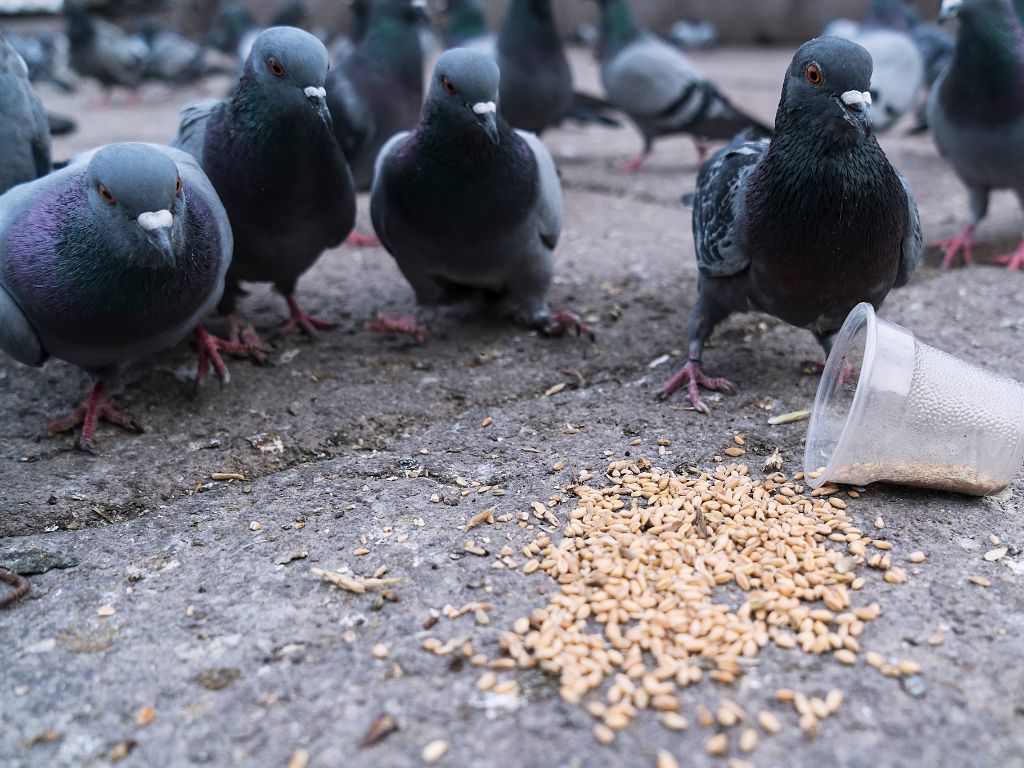
Differences in Behavior
Living with us in urban landscapes, pigeons have adapted to a different way of life, showcasing some variations in behavior compared to their wild counterparts. The bustling city life, teeming with constant human activity and easily accessible food sources, have influenced their habits significantly.
For starters, Gerard and his city-living kin have become exceptionally comfortable around humans. They’ve learned that we’re not a threat — in fact, often quite the opposite. They’re often seen perched on city benches, hoping for a generous passerby to toss a few crumbs their way.
The availability of food in cities also means urban pigeons don’t need to forage extensively. Fast food leftovers, bread crumbs, or someone like me who enjoys feeding them ensure they never have to venture too far for their next meal. This luxury is something their wild relatives don’t have, who spend much of their day searching for food.
The Effect of Urban Environment on Pigeon Migration
Urban environments have a profound influence on pigeon migration — or rather, the lack thereof. The relative safety of cities, along with constant food availability, almost entirely eradicates the need for migration. Why go through the energy-intensive process of migration when all needs can be met right where they are?
Even during the colder months, urban pigeons don’t feel the pinch of food scarcity as their rural counterparts might. City heating systems create warm microclimates, while humans keep inadvertently (or in my case, deliberately) providing food, ensuring survival isn’t a struggle for them. For pigeons in cities like mine, Gerard, migration is a foreign concept.
So, if you’ve ever found yourself wondering where all the city pigeons go during winter — the answer is nowhere, really. They’re probably huddled up somewhere nearby, riding out the cold until warmer days return. They remain city dwellers, just like us, braving the cold winters and basking in the summer sun.
Do pigeons migrate? Final points
We’ve come a long way in understanding the habits and migration patterns, or lack thereof, in pigeons. Beginning with an exploration of the general behavior and lifestyle of pigeons, we dug deeper into the concept of migration, debunking the myth that pigeons are migratory creatures. We then examined how their habits contrast with other birds that do engage in regular migrations.
Additionally, we investigated the factors that influence pigeon movements, learning that factors like seasonal changes and food availability do play a role but don’t usually lead to migration. Lastly, we looked at how the urban environment shapes pigeon behavior, providing an abundant supply of food and warmth that keeps them comfortably settled in one place all year round.
Reflecting on everything we’ve discussed, it becomes clear why my Gerard, and other city pigeons, aren’t packing up and flying south when winter rolls around. They’ve got everything they need right here. Far from being a shortcoming, their ability to adapt to the urban lifestyle speaks volumes about their resilience and intelligence.
It’s also a reminder of how deeply our lives are intertwined with those of the animals around us, and how our actions — from city planning to waste disposal — can dramatically impact their behaviors and lifestyles. So next time you see a pigeon on a chilly winter day, remember: they aren’t stuck here out of misfortune. They’ve made a conscious choice to stay. They’re not just surviving in our concrete jungles, but thriving. And that’s a testament to their incredible adaptability.

